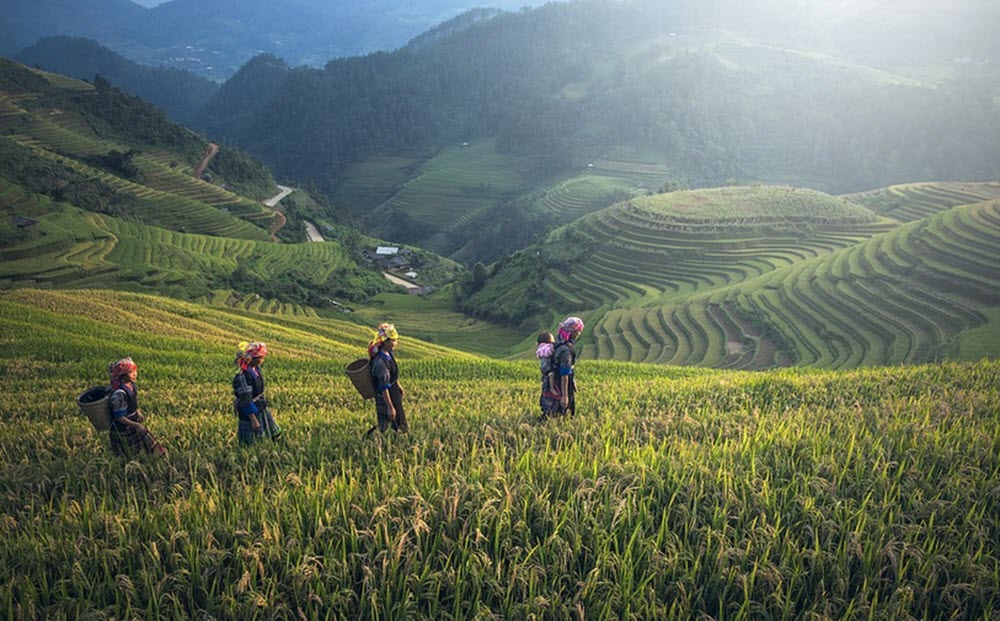The Lao People’s Democratic Republic, also known as Muang Lao or simply Laos, is a landlocked country on the Indochinese peninsula in South East Asia. Laos is a one-party socialist (Marxism-Leninism) republic governed by the Lao People’s Revolutionary Party, and during the Cold War era, the government of Laos strongly aligned itself with the Soviet Bloc.

Since the fall of the Soviet Union, Laos has improved its relationships with many non-socialist countries – including its regional neighbours in South East Asia. This in turn has helped make Laos a more accessible country for tourists from places such as North America and Western Europe. Laos normalized trade relations with the United States in 2004 and was granted full membership of the World Trade Organization in 2013.
The two largest religions in Laos are Buddhism (almost 65% of the population) and Satsana Phi (over 30% of the population). Less than 2% are Christians and less than 1% are Muslims. Satsana Phi, also known as Tai folk religion, is an animist religious belief. Several beliefs and practises from Satsana Phi have been incorporated in Laotian Buddhism.
Examples of attractions
These are just a few examples of popular spots to visit in Laos. The list is definitely not exhaustive.
- Champasak Cultural Landscape, a UNESCO World Heritage site with Khmer ruins.
- Luang Prabang, a UNSECO World Heritage city with a combo of temples and colonial era buildings. Use to be the capital of Laos. Don’t miss the night market.
- Vientiane, the capital of Laos. Compared to other capitals in SEA, Vientiane is much less hectic and feels more like a pleasant town than a bustling capital city.
- Luang Namtha, an important city in the north. A good base for hikers who wish to explore the north on foot.
- Vang Vieng, good base for those who wish to go tubing on the Nam Song and explore limestone caves.
- The Ban Nala Trail, a trekking route in northern Laos.
- Pakse. This city is a gateway to the Wat Phu ruins and the Si Phan Don (“Four Thousand Islands”) in the Mekong.
- The Phou Hin Boun National Park with its Konglor Cave. The city Tha Khaek is a good base for exploring the park.
- Pha Tad Ke, a botanical garden dedicated to biodiversity.
- Nogn Khiaw, popular among kayakers.
- Plain of Jars, an Iron Age cemetary near Phonsavan.
Climate
Laos has three seasons:
- The hot season, which roughly runs from March to May. Days when the temperature reaches 40°C are not unusual.
- The hot season is followed by the rainy season, which runs from the end of the hot season through October. The rainiest months are July and August. Expect day temperatures around 30°C in a large part of the country.
- The rainy season is followed by the dry season, which runs from November to the start of the hot season. This is not just the driest, but also the coolest season in Laos. In many parts of the country, temperatures can drop down to circa 15°C. In mountainous areas, there might even be some nights where the temperature reaches the freezing point. A majority of the visitors to Laos arrive during the dry season, since this is when the heat is less oppressive.
Important: During the late part of the dry season, many farmers in northern Laos (north of Luang Prabang) burn their fields, and some also practise slash-and-burn in the forests. This can cause the air quality to plummet in that region.

Basic info about Laos
Here is some basic info that may come in handy as you plan your trip to Laos.
- Area: 237,955 square kilometres
- Population: 6,492,228 at the 2015 census
- Official language: Lao
- Other notable languages: Hmong, Khmu, French
- Capital: Vientiane
- Most populous city: Vientiane
- Currency: Kip (LAK)
- Time zone: UTC+7
- Driving side: Right
- Calling code: +856
- ISO 3166code: LA
- Internet top domain: .la